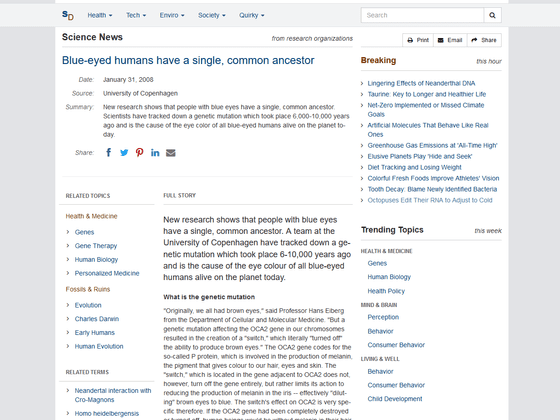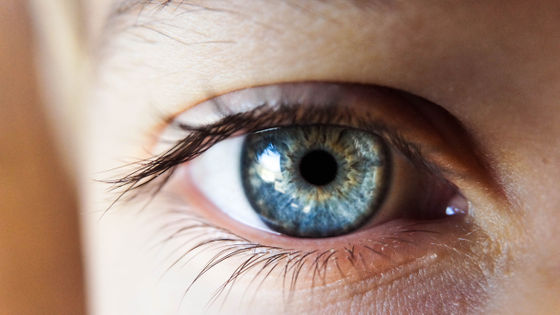All blue-eyed people may have descended from a common ancestor that mutated about 10,000 years ago

The human
Blue eye color in humans may be caused by a perfectly associated founder mutation in a regulatory element located within the HERC2 gene inhibiting OCA2 expression | SpringerLink
https://doi.org/10.1007/s00439-007-0460-x

Blue-eyed humans have a single, common ancestor -- ScienceDaily

Everyone With Blue Eyes May Descend From a Single Human Ancestor
Don't It Make Your Brown Eyes Blue? | Science | AAAS
https://www.science.org/content/article/dont-it-make-your-brown-eyes-blue
In the first place, the color of human hair, skin, and iris is determined by the amount of melanin pigment. If the iris is brown, the amount of melanin is large, and if it is blue, the amount is small.
In addition, the amount of melanin that determines the color of the iris is greatly related to a gene called ' OCA2 '. The protein produced from OCA2 promotes the maturation of cells involved in melanin production and storage, and plays an important role in the amount of melanin in the iris.
Furthermore, it has been suggested that the iris, which was originally brown, may change to green or hazel when this OCA2 is mutated. On the other hand, despite long-term research, the cause of brown irises turning blue has not been clarified.
In 2008, a research team led by Hans Eiberg of the University of Copenhagen continued to investigate a Danish family to investigate the inherited DNA, as well as compare the brown or blue irises of Jordanian and Turkish people. I did. As a result of the investigation, it was found that the factor that causes the brown iris to turn blue is not OCA2, but a gene called ' HERC2 '.
HERC2 has a function to regulate the expression of OCA2, and when HERC2 is mutated, it reduces the expression of OCA2, thereby reducing the amount of protein produced from OCA2. As a result, the amount of melanin in the iris is reduced, inhibiting the production of brown iris, and is thought to change to blue iris.

Mr. Iberg said about the HERC2 mutation, ``Thanks to the person who first mutated the HERC2 gene, a human being with a blue iris was born.'' The first person to mutate HERC2 passed the mutation on to subsequent generations, gradually increasing the number of individuals with blue irises.
According to the research team investigating the roots of HERC2, the blue iris, which is common in people of European descent, may have developed from people living around
``It's not uncommon for one gene to control the work of another, but finding the mutation is difficult,'' said Richard Sturm, a geneticist at the University of Queensland. So far, only one factor has been found, a mutation in the HEC2 gene, but one day another factor may be discovered that causes blue irises.'

Mr. Iberg said, ``The mutation from brown to blue irises has neither good nor bad effects on humans, and is a type of mutation related to appearance such as hair color, amount, and freckles. does not threaten the survival chances of ``These mutations are just nature shuffling the human genes and trying different variations in it,'' he said.
Related Posts:
in Science, Posted by log1r_ut







